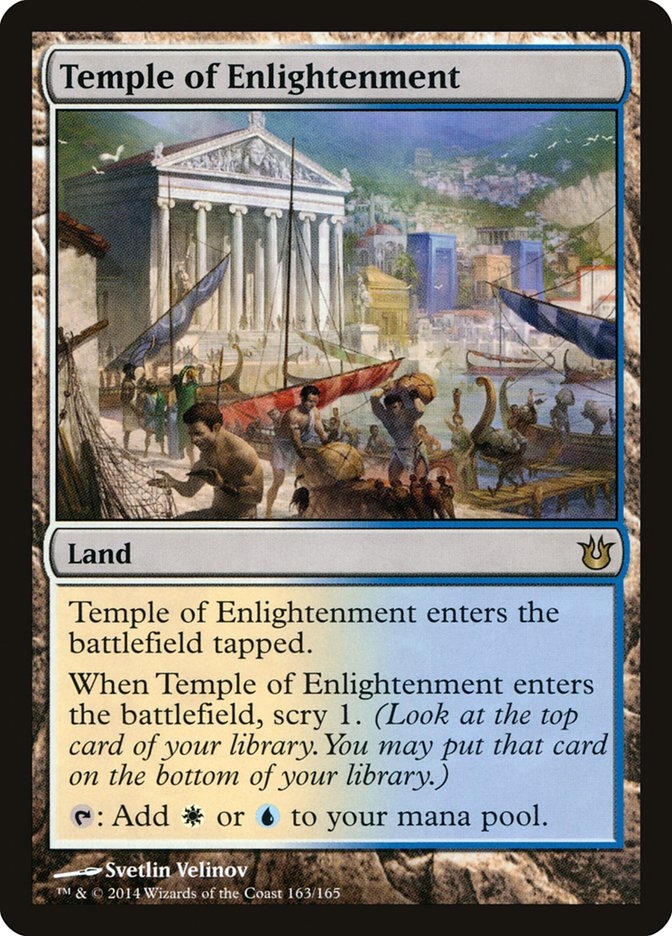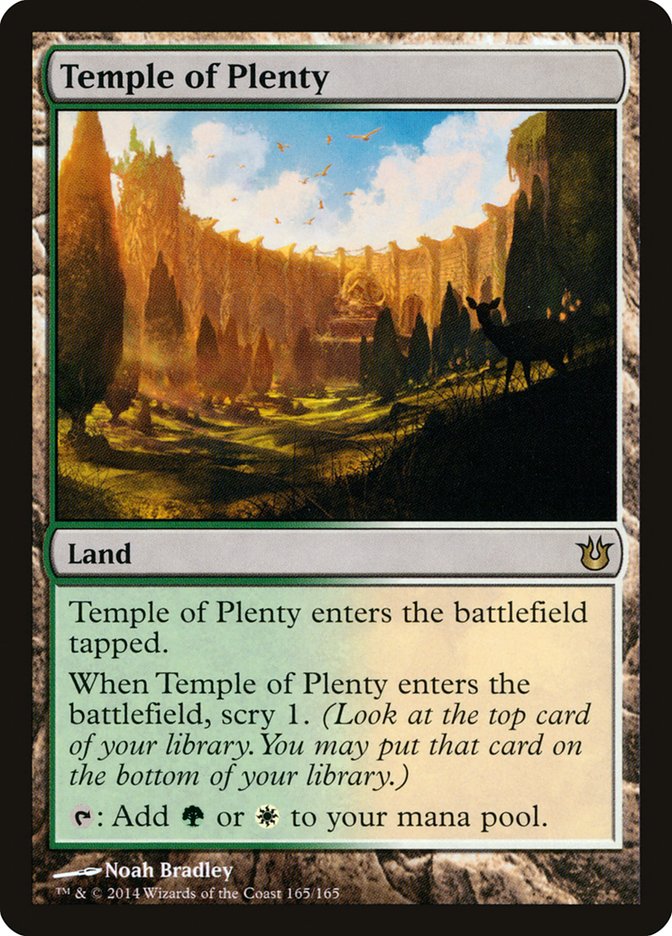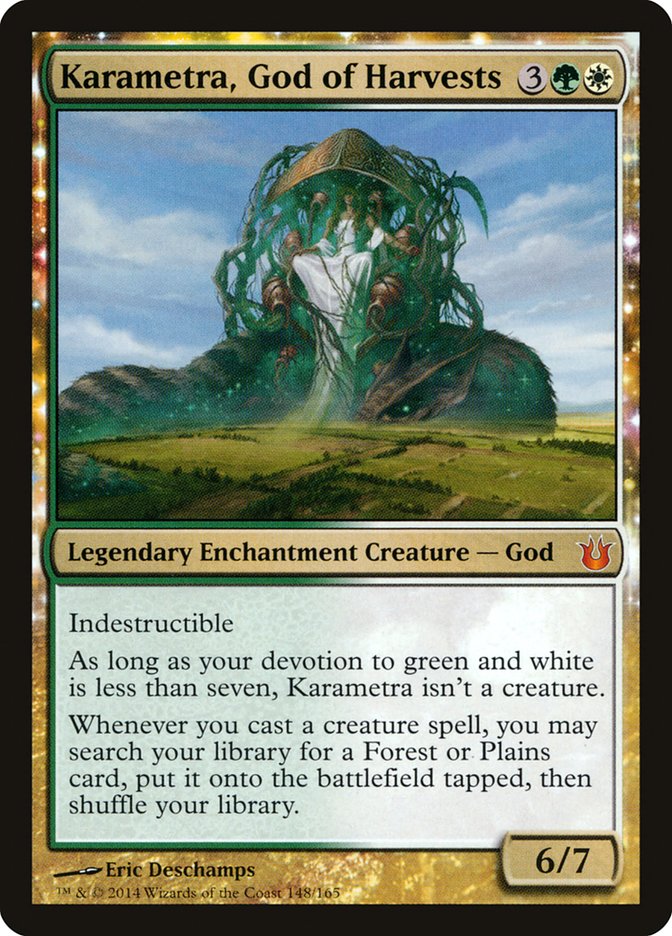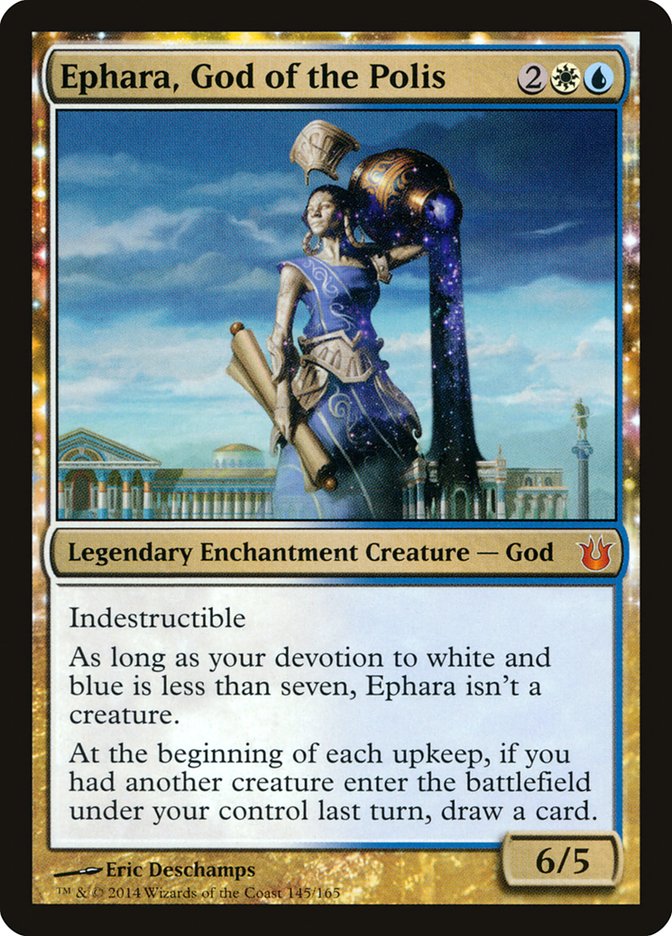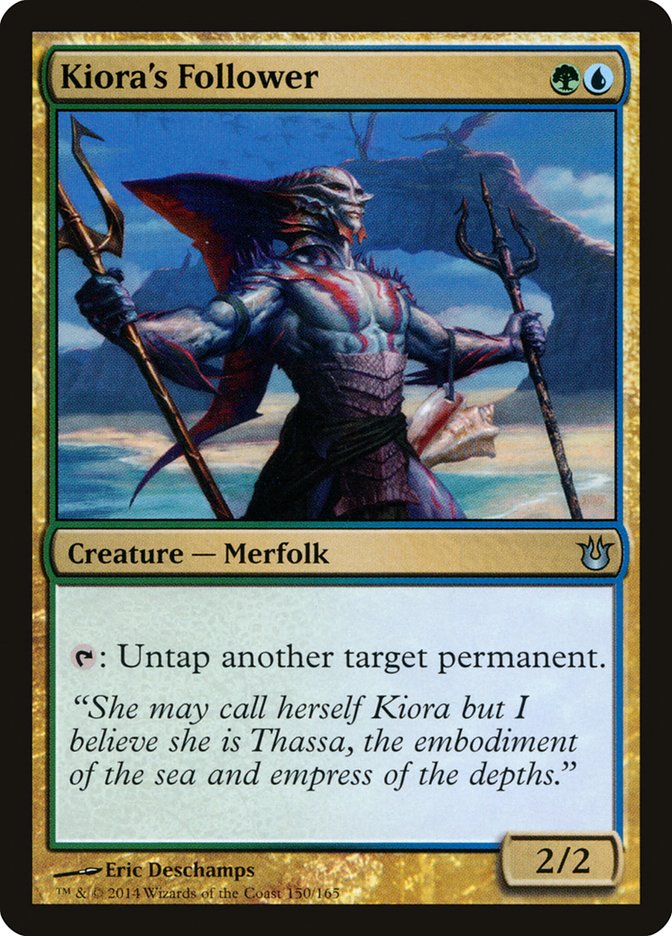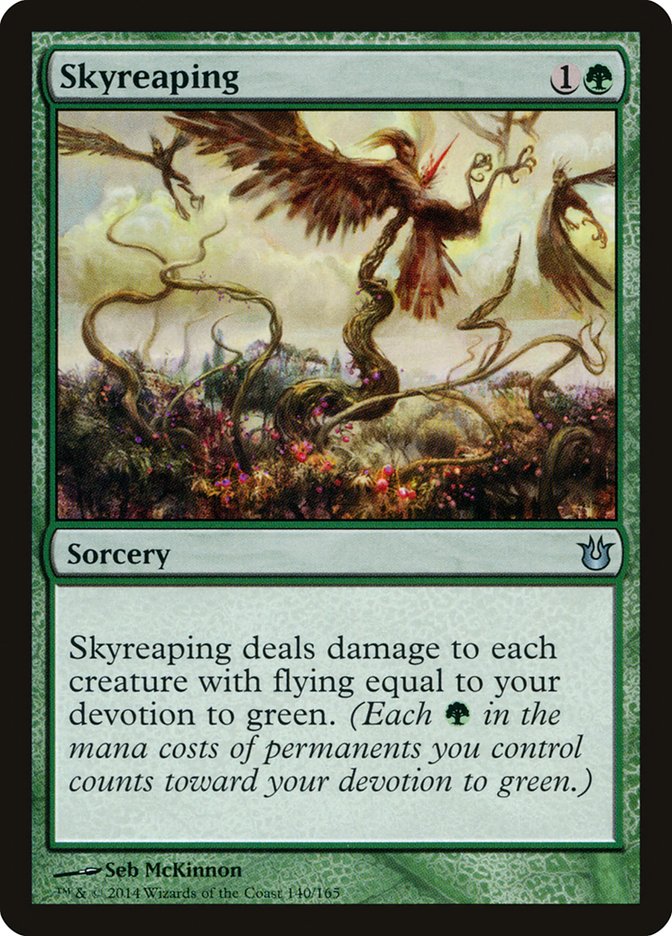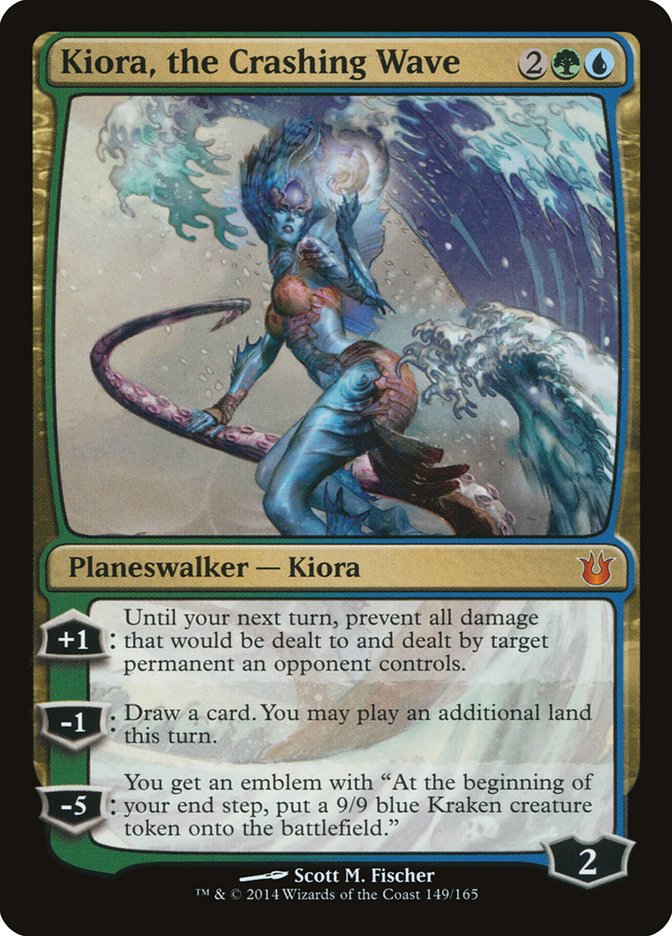It’s that special time again: spoiler season! We haven’t seen every card from Born of the Gods just yet, and we can’t say for sure what Standard will look like come the new set’s release. To me, though, that makes things all the more exciting. It’s a time for dreaming big and for our imaginations to run wild.
So far we’ve seen scry lands in new color combinations and a handful of standalone cards that could shake things up in a big way. At this point, though, the flagship cards of the new set seem to be the multicolored Gods.
Maybe what most intrigues me about Ephara, Karametra, Xenagos, Phenax, and Mogis is that they don’t fit into current Standard’s top decks. They have no place in monocolored devotion decks, and the creature-light Sphinx’s Revelation control decks cannot support them. But I know one place where some of these Gods might find a home . . .
Creatures (23)
- 1 Prime Speaker Zegana
- 1 Aetherling
- 4 Elvish Mystic
- 3 Polukranos, World Eater
- 4 Sylvan Caryatid
- 4 Prophet of Kruphix
- 2 Ephara, God of the Polis
- 3 Kiora's Follower
- 1 Karametra, God of Harvests
Planeswalkers (3)
Lands (25)
Spells (9)

Regular readers of my column might remember Prophet Bant as a pet deck that I worked on back in November. However, I have hope that new tools from Born of the Gods combined with an honest effort to fine tune and perfect the deck could lift Prophet Bant from the category of "just for fun" to a highly competitive player.
The clearest upgrade to this strategy is the introduction of not one but two new scry lands.
It’s hard to really appreciate how good the scry lands are until you’ve played with them extensively. I remember months ago viewing them as "Guildgates with a small upside," but the reality is that they’re better than the Ravnica shock lands in many cases.
I would do whatever it takes in order to not play Guildgates in a deck like Prophet Bant. Scry lands, on the other hand, are a very welcome addition that hugely increase the consistency of the deck.
Since my suggested build does not have a large amount of white and I don’t want to overload on enters-the-battlefield-tapped lands, I’ve simply swapped three basic lands for three new scry lands, but that alone constitutes quite a big change.
In addition to making the Detention Spheres and Sphinx’s Revelations a lot more reliable, these new scry lands expand the creative deckbuilding space of Prophet Bant. I’ve chosen to focus on new cards in this article, but the door is now open to include a number of existing white cards that might have been too ambitious in old Standard. Some interesting possibilities include Voice of Resurgence, Supreme Verdict, and Archangel of Thune in either the maindeck or the sideboard. Last Breath is also an option, although it’s substantially less appealing than it would have been in old Standard since Spirit of the Labyrinth may be one of the bigger problem creatures for Prophet Bant.
Your mother made you eat your green beans, and I made you read about how important scry lands are—it’s only because we love you. But now it’s time to move on to some very juicy steak.
Gods are difficult cards to evaluate—the multicolored Gods even more so. As a starting point, let’s set aside the fact that Karametra will frequently be a 6/7 indestructible creature.
She has a passive effect that offers you a long-run advantage. To be more precise, Karametra offers you a very big advantage in the very long run. Let’s call a spade a spade—this is a slow card. You put Karametra in your deck with the intention of playing a long game. However, when things go according to plan and you can get her into play on turn 3 or 4 and then extend the game beyond turn 6 or 7, you’ll begin to amass a nearly insurmountable advantage.
My suggested decklist features a whopping 23 creatures in addition to a number of card-draw engines that will keep them flowing. This will have you casting a creature virtually every turn and multiple creatures per turn when things are going well. After drawing a few extra lands out of your deck, your Sphinx’s Revelations will be backbreaking. This is not even to mention intangible side benefits like deck thinning and casting multiple spells in a turn.
Beyond Sphinx’s Revelation, Karametra combos in exciting ways with two cards from old Standard Prophet Bant. With Primeval Bounty, you’ll gain a healthy amount of life, which contributes to your goal of extending the game (and quite simply means you win as long as you have those two cards in play!). With Prophet of Kruphix, you can put a land into play tapped and then pass the turn and get your extra mana immediately without waiting until your next untap step.
And now we have that little matter of being a 6/7 indestructible creature.
Devotion of seven at first seems like a daunting task, but remember that the multicolored Gods count two mana symbols toward themselves right off the bat. Detention Sphere counts toward Karametra; Polukranos, World Eater and Prime Speaker Zegana count double; and all the mana creatures in Prophet Bant will have her active fairly reliably in the late game.
The addition of the multicolored Gods will help to correct a huge weakness of Prophet Bant by representing relevant threats that aren’t killed by Supreme Verdict.
As much as Karametra has to offer, though, the more exciting of the new Gods is Ephara, God of the Polis.
She is cheaper, and her impact is more immediate. Ephara, God of the Polis will have Prophet Bant firing on all cylinders. Casting creatures leads to drawing more cards and making more mana, which leads to casting more creatures, which leads to drawing more cards and making more mana, which leads to an opponent buried under an avalanche that will be simply impossible to withstand.
Like Karametra, there are a couple of special interactions that I’d like to point out. First is that Ephara does not require you to cast a creature, merely to have one enter the battlefield under your control. This means that you can target one of your own guys with Curse of the Swine to draw an extra card. I don’t expect that will come up tremendously often, but it has more interesting applications to Rapid Hybridization as a possible card for either Prophet Bant or a different deck entirely.
Second and much more important is the way Ephara can combine with Prophet of Kruphix to create a devastating engine. Giving your creatures flash (and doubling your mana) means that you can trigger Ephara on both players’ turns, doubling the fun!
A quick rules note is that you can cast your Gods at instant speed if you have a Prophet in play even if you don’t have the requisite devotion to make them creatures. However, they will not cause Ephara to trigger if they come into play in their noncreature form. (They are "creature cards" and therefore count as creatures while in all zones other than on the battlefield.)
Let’s move on to a couple of standalone hits beyond the scry lands and the multicolored Gods.
In the old Standard version of Prophet Bant, Voyaging Satyr earned a grudging slot as the third-best mana accelerant after Sylvan Caryatid and Elvish Mystic. Kiora’s Follower is not only an upgrade but a slam dunk.
Here are the implications of transforming Voyaging Satyr into Kiora’s Follower:
1. You augment your blue devotion, which is relevant for both Ephara, God of the Polis and Nykthos, Shrine to Nyx.
2. You can now trade with aggressive cards like Rakdos Cackler, Burning-Tree Emissary, and Mutavault.
3. Your mana creatures now present a more relevant threat for attacking players and planeswalkers. This is particularly important against creature-light control decks.
4. You can play both offense and defense with a card like Polukranos, World Eater if you find yourself in a racing situation.
5. The one negative to the change is that Kiora’s Follower is marginally more difficult to cast than Voyaging Satyr.
On the whole, I find Kiora’s Follower to be an exciting card that will generally raise the power level of Prophet Bant.
Purely a sideboard card, but I believe a fairly useful one. I had already considered Windstorm and Plummet as cards to defend against the air force of Mono-Blue Devotion (Prophet Bant’s worst matchup). Skyreaping is quick, efficient, and surprising, and you’ll frequently be able to cast it plus another spell on one crucial turn. This card will help a lot against the hardest-to-beat draws from your hardest-to-beat opponents.
I’ll come clean—I’m not sure what to think of our new planeswalker. Even more so than the Gods, planeswalkers are cards that I sometimes need to see in action before drawing a firm conclusion about them.
My hunch is that for a non Supreme Verdict deck Kiora will be a little bit too fragile against fast beatdown strategies to be a maindeck card, at least in large numbers. I think that Jace, Architect of Thought is a little better and more reliable for Prophet Bant, and for a deck with so many creature synergies, I’d rather err on the side of playing creatures over noncreatures when I’m in doubt.
That said, accelerating out noncreature threats is the best strategy for beating control with such a deck, and against an opponent with no creatures and no burn, a turn 3 Kiora will be backbreaking. I wouldn’t be opposed to sideboarding as many copies of the new planeswalker as you could find room for.
So with only half the set spoiled, we already have half a dozen new tools to revamp the Prophet Bant strategy. These upgrades could be just enough to push the strategy over the edge in terms of competitive power level.
While I’m very excited about the deck I discussed today, I’ll be the first to say that we’re looking at a collection of powerful and exciting new cards and there could be a tremendous number of great homes for each of them. Hopefully Born of the Gods Standard will be a format of tremendous possibility. I can’t wait to dive in!

